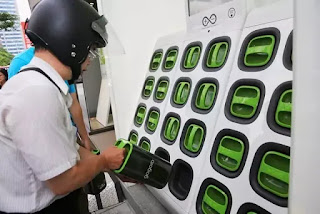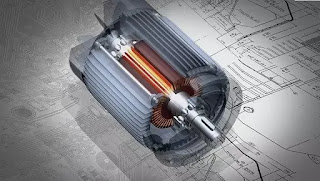Battery swapping Technology for EVs
Battery charging has a pivotal role in the adaptability of EVs. As battery is the only source of energy, the current charging scheme is not completely satisfying the customer demands. It includes plugging the EV into an outlet,either individual household or in a battery charging station and leave the vehicle for hours until it's fully charged.
The time taken for charging EV is very long compared to the refuelling of gasoline-powered vehicles. This charging time in EV is considered as the biggest barrier in adoption of electric vehicle. On other hand, EVs are offering decent range suitable for daily travel, many users consider charging as an important factor in their driving needs.
Another hurdle faced by the charging station authorities is the cost of building charging station facility and required real estate. EVs take hours to fully charge, so all these time it needs a parking space. So deploying a battery charging station is very costly, especially in densely populated urban areas. All these hurdles can be overcomed by introducing Battery swapping Technology.
Battery swapping technology is basically swapping the empty battery with the charged ones. This swapping is done on Battery swapping stations. Most of these swapping process is automated. The idea is that EV owners can easily pullover in a swapping station, where an empty battery is automatically switched with a charged one. Unlike charging EVs by plugging into electric grid, battery swapping just takes few minutes to swap the battery and drivers not only charge their vehicle as fast as fuelling the vehicle but also extend their travelling range.
Battery Swapping station Working
In swapping station, main players involved are
- EV owner
- Swapping station owner
- Power supply system
Workflow diagram of Battery swapping station.
EV Owner
- Low price for EVs, as station owns the battery
- Fast battery charging, equals to the time taken by gasoline powered vehicle to fill fuel.
- Allows longer travels by the access of battery swapping from swapping stations.
- Relieved concern about battery lifetime as swapping station runs healthy and advanced charging over battery.
- No cost of upgrading household electric infrastructure for high power fast charging, if they own fast charging battery vehicles.
- Low cost of real estate(space for charging station) as the is no need of large parking spaces.
- Minimizing electricity cost by scheduling battery charging process.
- Maximizing the profit by participating in Electricity market and providing ancillary services.
- Convenience in battery charging due to the availability of consistent battery standard.
- Controlled charging strategy in terms of scheduling battery charging time.
- Controlled or postponed charging on peak or night hours
- Can act as a large flexible load by controlling charging and discharging time of batteries.
- Peak demand or overloading by increasing no of vehicles can be flattened by scheduling a consistent charging schedule without upgrading current grid.
Even though battery swapping system is widely accepted technology to overcome the barriers faced by EVs, it also have its own limitations. Some of them are:-
- Complexity in battery design- Most of the manufactures design their in complex way that cannot be removed easily. So design has to be made simple to easily remove battery
- Compatibility- For the wide acceptance of battery swapping technoogy, a standard must be kept on the types of battery used in EVs. Batteries in swapping station should be flexible to all types of EVs.
- Battery degradation- performance of battery degrades over time. As a result customers won't be able to achieve enough range as battery life cycle decrease over time.
- Ownership of battery- There is a confusion in the real ownership of battery between EV owner and swapping station.
Apart from all these limitations, which will be made easier in coming days, Battery swapping technology will reduce time for charging, decrease size of battery, increase running time. Moreover the adaptability of EVs will be easier.
Comment your queries and thoughts. Keep Reading.








Comments
Post a Comment
Please do not enter any spam link in the comment box.